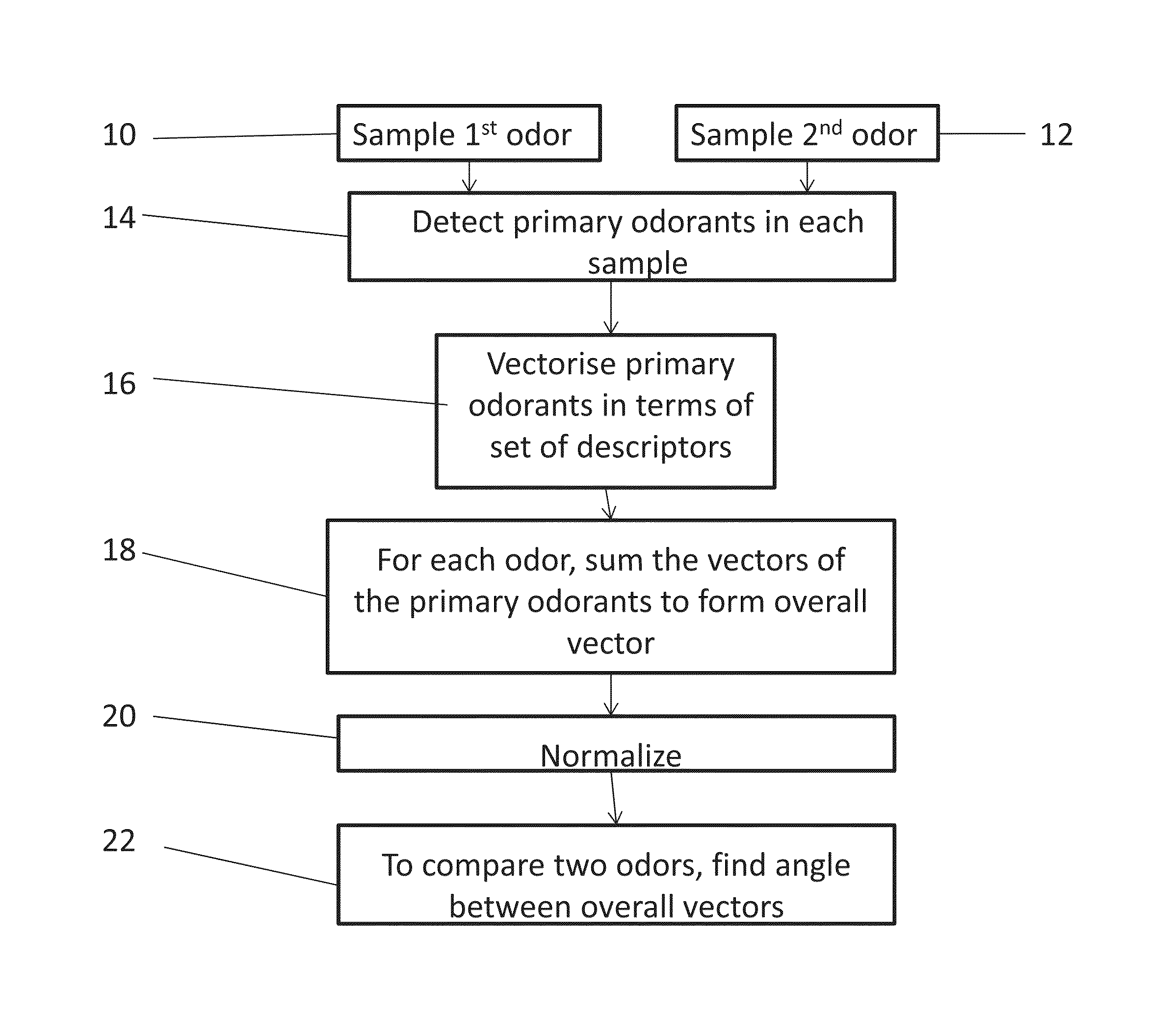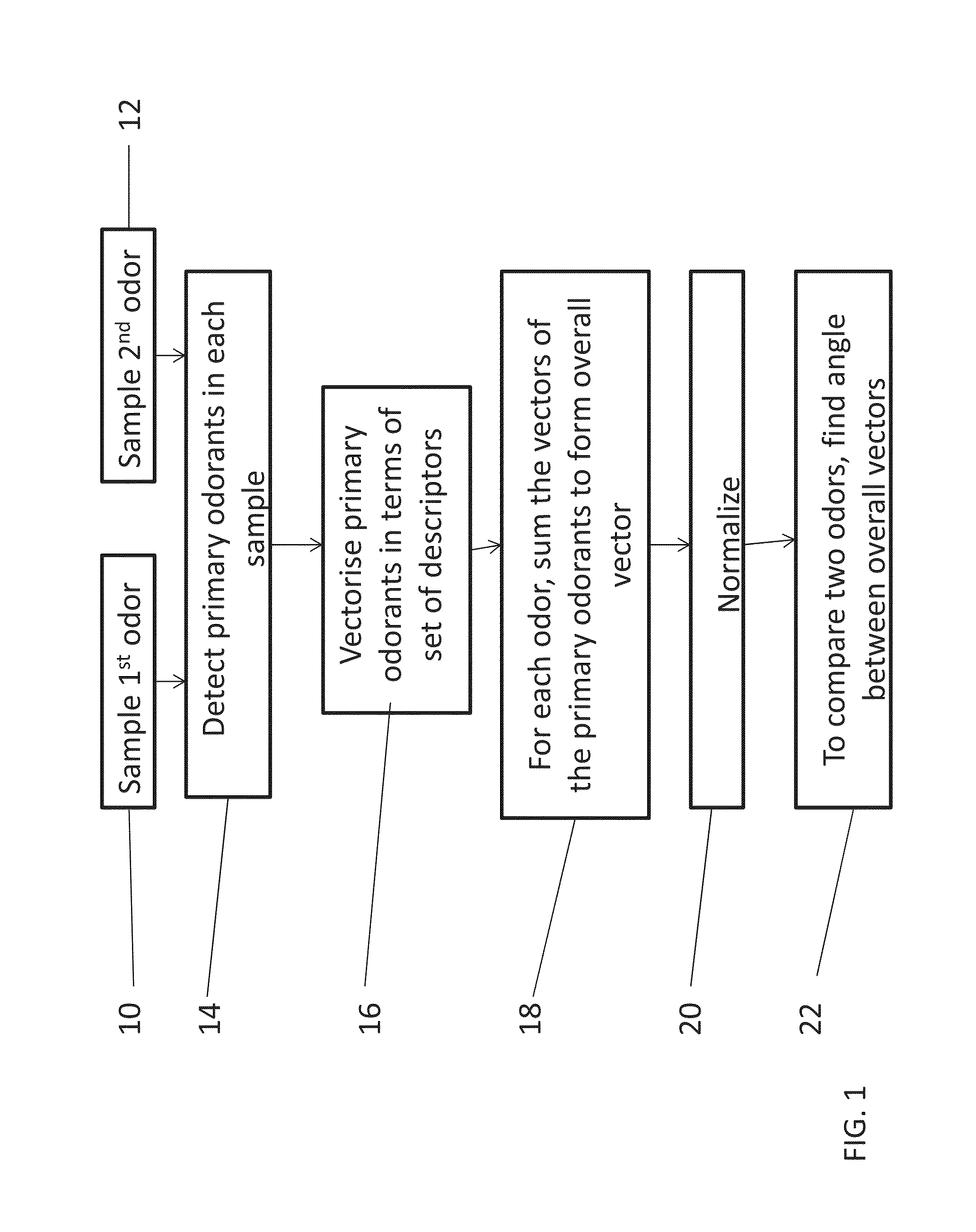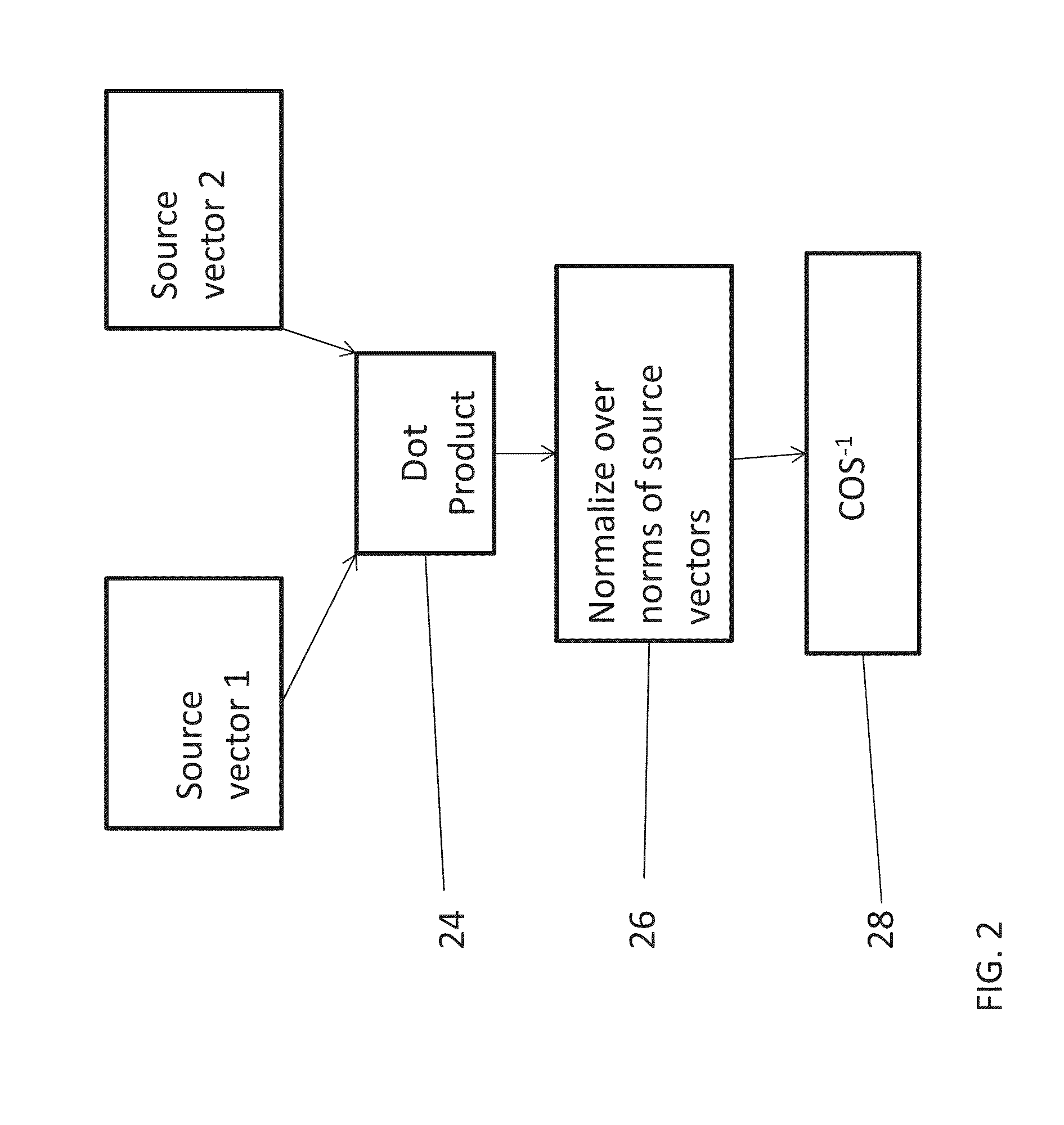Method and electronic nose for comparing odors
a technology of comparing odors and noses, applied in the field of comparing odors, can solve the problems of not producing a general method to quantify olfactory perception, not gravitating to an agreed upon system for odor measurement, and not producing a general framework for measuring smell
- Summary
- Abstract
- Description
- Claims
- Application Information
AI Technical Summary
Benefits of technology
Problems solved by technology
Method used
Image
Examples
experiment a
[0111]We obtain 86 monomolecular odorants that are well distributed in both perceptual and physicochemical stimulus space. We then dilute each of these odorants separately to a point of about equal perceived intensity as estimated by an independent group of 24 subjects, and prepare various odorant mixtures containing various numbers of such equal-intensity odorant components. To select the components of each mixture, we use an algorithm that automatically identifies combinations of molecules spread out in olfactory stimulus space. We prepare several different versions for each mixture size containing 1, 4, 10, 15, 20, 30, or 40 / 43 components, such that half of the versions are optimally spread in perceptual space, and half of the versions are optimally spread in physicochemical space. We conduct pairwise similarity tests, using a 9-point visual analogue scale; VAS of 191 mixture pairs, in 56 subjects and using an average of 14 subjects per comparison. Each target mixture (1, 4, 10, ...
experiment b
[0112]The preparation of the mixtures follows the same method as in experiment A but we increase the accuracy of the data in two ways. First, we increase the number of participants to 24 subjects per comparison. Second, to negate the possibility of formation of new chemical entities due to interactions between the selected components, all mixtures are analyzed in gas chromatography mass spectrometry. The mixtures are analyzed both before and after heating (60° for 3 hours), as to enhance any chemical interactions that should have taken place only after a certain amount of time. Two mixtures out of the 14 tested show a retention time that does not match any of their components and are thus replaced. The replacement mixtures are similar to the replaced mixtures, except for one component whose retention time was missing in the analysis. The replacement mixtures were tested again in a similar manner.
[0113]We conduct pairwise similarity tests of all 91 possible pairs plus 4 comparisons o...
experiment c
[0114]This similarity experiment of mono-molecules consists of three different sets of experiments. The first experiment included similarity ratings by 21 subjects, including 11 female, between 14 pairs of molecules; the second included similarity ratings by 17 subjects, 9 being female, between 20 pairs of molecules, and the third included 19 subjects, 6 being female, rating 40 pairs of molecules for similarity. In total, 49 mono-molecules were included in this experiment. The pool of molecules is included in the original pool of 86 molecules in experiment A and includes 42 of the 43 in the pool of experiment B, and another 7 which are not included in experiment B. The procedure for preparing the mixtures and rating similarities followed the higher accuracy design of experiment B except that since the odorants are single molecules there was no need to test them with the gas spectrometer. In total, 74 comparisons were conducted amongst the 49 molecules. Out of these comparisons 65% (...
PUM
 Login to View More
Login to View More Abstract
Description
Claims
Application Information
 Login to View More
Login to View More - R&D
- Intellectual Property
- Life Sciences
- Materials
- Tech Scout
- Unparalleled Data Quality
- Higher Quality Content
- 60% Fewer Hallucinations
Browse by: Latest US Patents, China's latest patents, Technical Efficacy Thesaurus, Application Domain, Technology Topic, Popular Technical Reports.
© 2025 PatSnap. All rights reserved.Legal|Privacy policy|Modern Slavery Act Transparency Statement|Sitemap|About US| Contact US: help@patsnap.com



